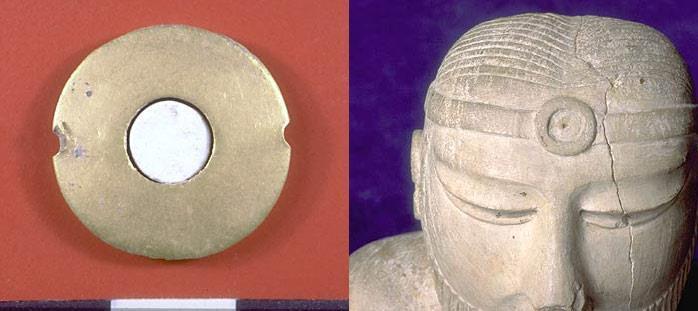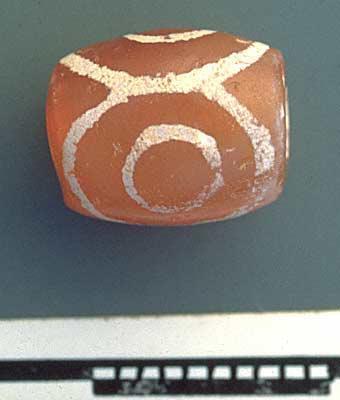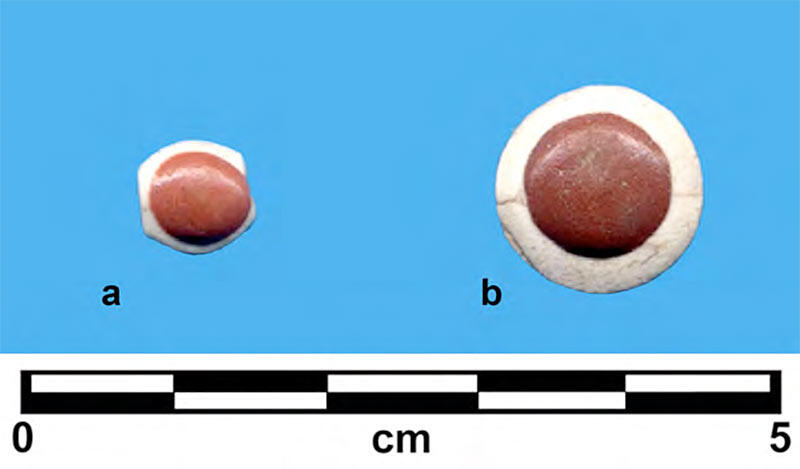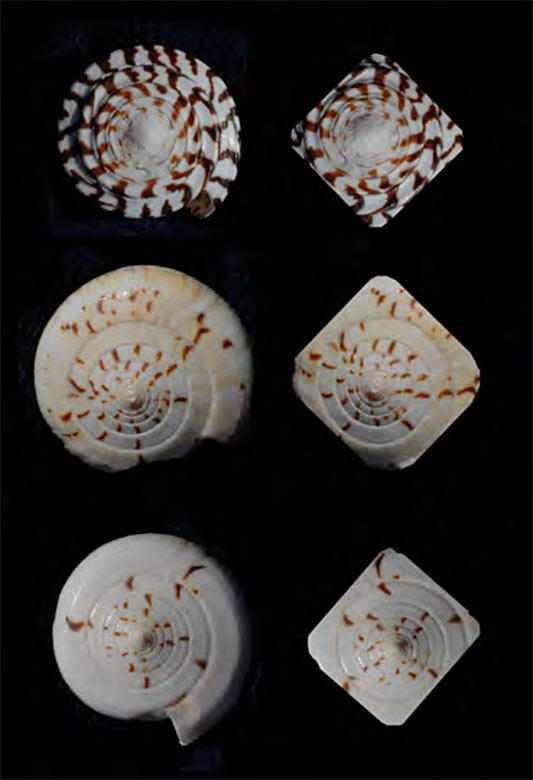An exploration of the prevalence and manufacture of a distinctive ornament which persists both in South Asian culture today, and throughout the larger West Asian and Middle Eastern world as well. An eye bead, writes the author "is a distinctive form of bead or pendant that has circular or concentric circular patterns that can be interpreted as representing one or more eyes" (p. 1). It is often used in this larger region today to ward off evil spirits, or the "evil eye." The author traces its possible development from pre-Indus times at sites like Mehrgarh and its potential origins in shell jewelry, through numerous manifestations uncluding its possible use on the headband of such figures like the "Priest-King" from Mohenjo-daro.
A lot of interesting themes that emerge. Manufacturing the kinds of eye-beads that became popular in Indus times required highly sophisticated manufacturing skills, replicating natural patterns with bleaches on carnelian for example, that testified to what was probably the high need for or value of these objects to their wearers. A number of examples from Harappa are used to make the point. Faience and composite technologies were also harnessed to make some of the most complex eye beads. While the author suspects that "use of eye beads may have been one response to provide a generic protection to the wearer against any and all evil influence in these new urban settings" (p. 12), he is careful to point out that we cannot be sure exactly what its use or meaning was in ancient times.
That their use seems to have increased in new urban settings is borne out from the evidence at Harappa, where the most consistent research across many time-bound layers of the site has been done by archaeologists. Dr. Kenoyer also draws in evidence from new excavations to the west, along the Ghaggar-Hakra-Saraswati rivers for example, after Indus civilization was in decline. "The use of eye motifs became more widespread during the urban period and continued to become more elaborate during the late Harappan and Early Historic periods" (p. 17). The link between the development of many kinds of eye beads and the rise of urbanism is particularly interesting, for it may suggest that urban populations faced more levers of stress or anxiety than before if they were meant to ward off evil spirits, something that ties into more recent discoveries on diet, disease and other tribulations of living in more tightly packed environments than village or hunter-gatherer lifestyles.
In short, a thought-provoking piece that embeds a specific bead type and tradition in the larger fabric of culture and technology, one that has grown far wider and has lasted much longer than when it first flourished in ancient Indus times.
Above:
1. "The central ornament worn on the forehead of the famous 'priest-king' sculpture from Mohenjo-daro appears to represent an eye bead, possibly made of gold with steatite inlay in the center" writes Dr. Kenoyer elsewhere.
2. Bleached carnelian Eye bead, Harappa
3. Faience eye beads, Harappa Period, Harappa
4. Indo-Pacific Conus shells with natural designs and replicas of ancient beads showing what they may have looked like originally








